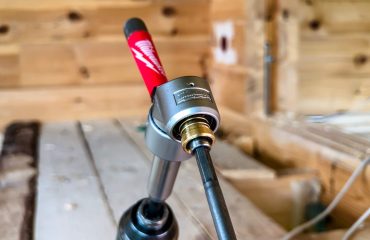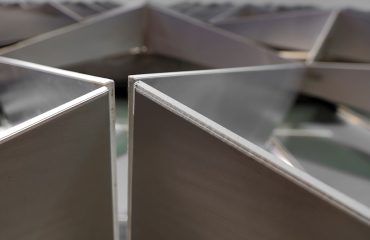body {
font-family: sans-serif;
line-height: 1.6;
}
h1, h2, h3 {
color: #333;
}
Cold drawn hexagonal bars are a highly versatile and robust material used across numerous industries. Their unique hexagonal shape, combined with the precision and strength imparted by the cold drawing process, makes them ideal for a wide range of applications. This comprehensive guide delves into the intricacies of cold drawn hexagonal bars, exploring their manufacturing, properties, advantages, and diverse applications.
The Cold Drawing Process: Shaping Strength and Precision
The creation of cold drawn hexagonal bars begins with a hot-rolled round bar. This initial bar undergoes a series of precise steps to achieve its final hexagonal form and superior properties. The process involves pulling the heated bar through a series of progressively smaller dies, under high tensile stress. This cold drawing process significantly alters the material’s microstructure. The metal undergoes significant work hardening, leading to increased tensile strength, yield strength, and improved surface finish. The lack of heat during this process eliminates oxidation and scaling, resulting in a cleaner, more precise final product. The intricate dies used in the process ensure the accurate and consistent hexagonal shape, with tight tolerances on dimensions. This precision is crucial for applications requiring exact fits and high dimensional accuracy.
Material Properties: Strength, Hardness, and Durability
The cold drawing process significantly enhances the mechanical properties of the hexagonal bars. Compared to their hot-rolled counterparts, cold drawn hexagonal bars exhibit:
- Higher Tensile Strength: The work hardening significantly increases the material’s resistance to tensile forces.
- Improved Yield Strength: The point at which the material begins to deform permanently is increased, leading to greater structural integrity.
- Enhanced Surface Finish: The cold drawing process produces a smoother, more refined surface, reducing friction and improving wear resistance.
- Increased Hardness: The material becomes harder and more resistant to scratching and abrasion.
- Better Dimensional Accuracy: The cold drawing process results in tighter tolerances and greater dimensional consistency.
These superior properties contribute to the overall durability and longevity of components manufactured using cold drawn hexagonal bars.
Applications Across Industries: Versatility in Action
The unique combination of strength, precision, and versatility makes cold drawn hexagonal bars indispensable in a wide range of industries. Some key applications include:
- Automotive: Used in various components, including axles, shafts, and connecting rods, where high strength and durability are critical.
- Aerospace: Their lightweight yet strong nature makes them suitable for applications requiring high strength-to-weight ratios.
- Construction: Used in structural elements, bolts, and fasteners where reliable strength and dimensional accuracy are crucial.
- Machinery Manufacturing: Ideal for creating shafts, spindles, and other machine parts demanding high precision and resistance to wear.
- Agricultural Machinery: Used in components subjected to high stress and impact, ensuring long-term performance.
- Hydraulic and Pneumatic Systems: Their strength and precise dimensions are crucial for ensuring leak-free and efficient operation.
The specific material grade and dimensions of the hexagonal bar are chosen based on the specific demands of the application.
Advantages of Cold Drawn Hexagonal Bars: Why Choose This Material?
Several advantages make cold drawn hexagonal bars a preferred choice over other materials:
- Enhanced Strength and Durability: The cold drawing process significantly improves the material’s mechanical properties.
- Superior Surface Finish: The smooth surface reduces friction and wear, extending component lifespan.
- High Dimensional Accuracy: Tight tolerances ensure precise fits and ease of assembly.
- Cost-Effectiveness: While the initial cost might be slightly higher than hot-rolled bars, the enhanced properties often lead to cost savings in the long run due to increased durability and reduced maintenance.
- Wide Range of Materials: Cold drawn hexagonal bars can be produced from various steel grades and alloys, allowing for customization to meet specific application requirements.
These advantages make cold drawn hexagonal bars a highly efficient and reliable material for a wide range of engineering applications.
Specifications and Material Grades: Choosing the Right Bar
Cold drawn hexagonal bars are available in a wide range of materials, sizes, and tolerances. Common material grades include various carbon steels, alloy steels, and stainless steels. The choice of material depends on the specific application requirements, considering factors like strength, corrosion resistance, and temperature tolerance. Detailed specifications, including dimensions, tolerances, and material properties, are usually provided by the manufacturer. It’s crucial to consult these specifications to ensure the chosen bar meets the necessary requirements for the intended application. Understanding these specifications is key to selecting the appropriate bar for optimal performance and longevity.
Choosing the right cold drawn hexagonal bar involves careful consideration of all the factors discussed above. By understanding the manufacturing process, material properties, applications, and advantages, engineers and designers can select the optimal material for their specific needs, ensuring the success and longevity of their projects.
SEO Tags: Cold drawn hexagonal bars, hexagonal steel bars, cold drawn steel, precision steel bars, engineering materials




